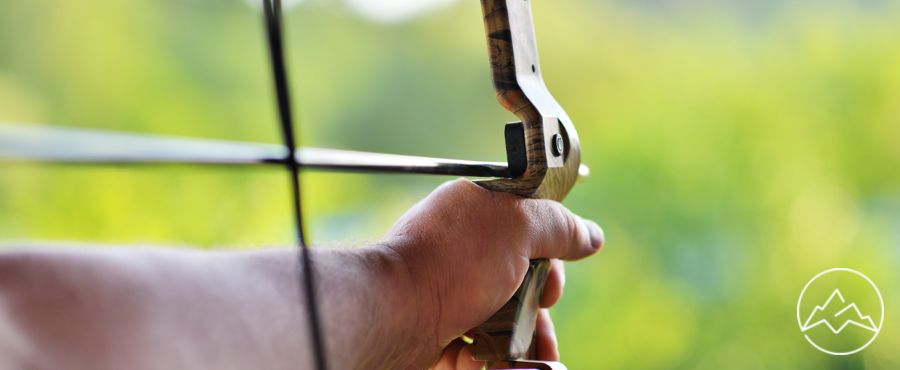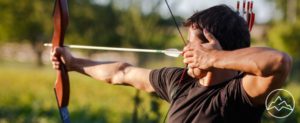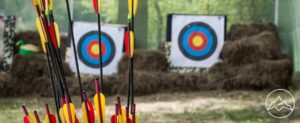Picture yourself on a serene archery range, the sun casting a warm golden glow on the field. As you prepare to take aim with your bow, a vital accessory stands by your side, ready to assist you in your quest for precision and accuracy. Enter the arrow quiver, the unsung hero of every archer’s arsenal. These cylindrical containers, crafted from a variety of materials, hold your precious arrows between shots, ensuring they are easily accessible when you need them most. In this article, we delve into the world of essential quiver styles, guiding you towards finding the perfect arrow holder that aligns with your unique archery style, shooting type, and personal preferences. Whether you are a longbow archer seeking the classic elegance of a back quiver or a bow hunter in search of a practical bow-mounted or detachable bow quiver, we explore the benefits and features of each quiver style. Join us on this quest to discover the ideal arrow holder that will elevate your archery experience to new heights.
Key Takeaways
- Arrow quivers come in various materials and styles, including cylindrical containers made of leather, wood, metal, canvas, or plastic, and they are important for easy access and protection of arrows.
- There are different types of quivers available, such as detachable bow quivers, bow-mounted quivers, back quivers, hip quivers (side quivers), and ground quivers, each serving different purposes and preferences.
- When choosing the right quiver, factors to consider include archery style, shooting type, and personal preference, with specific recommendations for different types of archers and beginners.
- Using a quiver offers benefits such as lightweight, durability, adjustability, and safety, making it an essential accessory for archers, particularly for shooting on the range.
Types of Quivers
The pre-existing knowledge provides an overview of different types of quivers, including detachable bow quivers, bow-mounted quivers, back quivers, hip quivers, and ground quivers. Each type of quiver has its own set of advantages and disadvantages. Detachable bow quivers offer quick access to arrows and are convenient for archers who need to shoot rapidly. Bow-mounted quivers securely attach to the bow, making transportation of arrows easier. Back quivers are worn diagonally across the back, allowing for quick access to arrows. Hip quivers, also known as side quivers, are worn off the hip or to the side, providing easy access to arrows. Ground quivers are set into or on top of the ground, keeping arrows organized and safe. It is important to properly care for and maintain your quiver, regardless of the material it is made of, in order to ensure its durability and longevity.
Choosing the Right Quiver
When selecting a quiver, it is crucial to consider factors such as archery style, shooting type, and personal preference. These factors will help determine the most suitable quiver for an archer’s needs. Here are three key factors to consider when choosing a quiver:
- Archery style: Different archery styles may require different quiver options. For example, longbow archers may prefer back quivers as they allow for easy access to arrows. Recurve bow archers, on the other hand, may opt for back or hip quivers. Compound bow archers often find hip quivers more convenient.
- Shooting type: The type of shooting an archer engages in can also influence quiver choice. Bow hunters, for instance, may find bow-mounted or detachable bow quivers more suitable for quick access during hunting situations. On the other hand, if an archer primarily shoots on a range, a hip quiver may be more practical.
- Personal preference: Finally, personal preference plays a significant role in choosing a quiver. Some archers may prioritize protection and organization of arrows, while others may prioritize easy accessibility. It is important to consider these personal preferences to ensure a quiver that enhances the overall archery experience.
Pros and cons of different quiver materials should also be taken into account. Leather quivers provide a classic and traditional look, but may be less durable. Wood and metal quivers offer sturdiness, but can be heavier. Canvas and plastic quivers are lightweight and durable, but may lack the aesthetic appeal of other materials. Considering the advantages and disadvantages of each material will help in making an informed decision when choosing the right quiver.
Benefits of Using a Quiver
One advantage of utilizing a quiver is its lightweight design, which allows for easier maneuverability during archery activities. Quivers are typically made from a variety of materials such as leather, wood, metal, canvas, and plastic. These materials not only contribute to the overall durability of the quiver but also provide protection for the arrows. The importance of arrow protection cannot be overstated, as it ensures that the arrows remain undamaged and in optimal condition for accurate shooting. Quivers also play a crucial role in keeping the arrows organized and easily accessible, allowing archers to quickly grab the arrows they need without any hindrance. Additionally, the adjustable nature of quivers allows for customization, accommodating different arrow lengths and quantities, making them an essential accessory for archers of all skill levels.
Frequently Asked Questions
How do I properly clean and maintain my arrow quiver?
Proper cleaning techniques and maintenance tips for arrow quivers are essential to ensure their longevity and functionality. To clean a quiver, start by removing any dirt or debris with a soft brush or cloth. For leather or fabric quivers, use a mild detergent and warm water to gently scrub away stains. Metal or plastic quivers can be wiped clean with a damp cloth. Regularly inspect the quiver for any signs of wear or damage, and address them promptly to prevent further deterioration. Additionally, store the quiver in a cool, dry place to maintain its condition.
Can I use a back quiver for hunting as well as target shooting?
Back quivers can be used for both hunting and target shooting. They offer quick and easy access to arrows, making them suitable for both activities. For hunting, a back quiver allows for silent and seamless retrieval of arrows while on the move. In target shooting, a back quiver provides convenience and efficiency during practice sessions. Whether you are a hunter or a target shooter, a back quiver can be a versatile and practical choice for storing and accessing your arrows.
Are there any specific regulations or restrictions on using quivers in certain archery competitions?
Regulations and restrictions regarding the use of quivers in archery competitions may vary depending on the specific event or organization. Some competitions may have rules specifying the type of quiver allowed, while others may have restrictions on the size or design of the quiver. It is important for archers to familiarize themselves with the regulations and guidelines of each competition they participate in to ensure compliance. By adhering to these regulations, archers can compete fairly and safely while showcasing their skills and precision in the sport of archery.
What are some alternative uses for arrow quivers besides holding arrows?
Arrow quivers, traditionally used to hold arrows during archery, have the potential for alternative uses beyond their intended purpose. These versatile containers can serve as creative storage solutions, offering a unique way to organize and display various items. Additionally, arrow quivers can be repurposed as stylish accessories, adding a touch of flair to outfits or home decor. With their durable construction and customizable features, arrow quivers lend themselves well to imaginative and functional applications beyond archery.
Are there any special considerations for left-handed archers when choosing a quiver?
Left-handed archers face common challenges when choosing a quiver. As left-handed individuals, they need to consider the accessibility and ease of use of the quiver. It is recommended for left-handed archers to choose quiver styles that cater to their specific needs. Quivers that can be worn on the hip or side, such as hip quivers or side quivers, are often preferred by left-handed archers as they allow for easy access and retrieval of arrows. Additionally, detachable bow quivers or bow-mounted quivers can also be suitable options for left-handed archers, providing quick and convenient access to arrows while shooting.
Conclusion
In conclusion, choosing the right arrow quiver is essential for archers to enhance their shooting experience. With various styles available, such as detachable bow quivers, bow-mounted quivers, back quivers, hip quivers, and ground quivers, individuals can select the one that suits their archery style and personal preference. Quivers offer numerous benefits, including lightweight design, durability, adjustability, and safety. Joining the archery community can provide exclusive content and free membership, allowing archers to further explore their passion. Did you know that a well-chosen quiver can make you feel like a skilled archer, ready to hit the bullseye with every shot?












